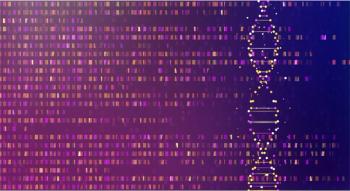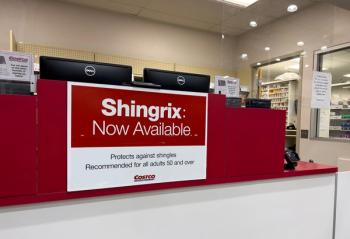
Study: Venetoclax Plus Hypomethylating Agent Effective in Newly Diagnosed Acute Myeloid Leukemia, Safe in Outpatient Setting
Results from a phase 3b study showed that venetoclax combined with azacitidine or decitabine can safely be initiated in a US community-based outpatient setting.
In a phase 3b, single-arm, multicenter, open-label study, the data showed that venetoclax (Venclexta, AbbVie Inc and Genentech USA, Inc) combined with hypomethylating agents (HMAs) azacitidine (Onureg, Bristol-Myers Squibb) or decitabine (Dacogen, Otsuka Pharmaceutical Co) is an effective treatment option for patients with newly diagnosed acute myeloid leukemia (ND AML), according to a poster presentation at the 2022 American Society of Clinical Oncology (ASCO) Annual Meeting.
The authors noted that these results demonstrate that this combination treatment can safely be initiated in a US community-based outpatient setting, as long as there is appropriate tumor lysis syndrome (TLS) prophylaxis and monitoring.
In prior clinical studies, venetoclax, a highly selective BCL-2 inhibitor, combined with HMAs azacitidine or decitabine was initiated in an inpatient setting due to concerns of TLS. The combination therapy is currently approved for the treatment of ND AML in patients who are ineligible to receive intensive chemotherapy. During this trial, the investigators aimed to assess the efficacy and safety of venetoclax combined with an HMA for patients with ND AML in a US community-based outpatient setting.
During the patient selection process, the investigators determined that patients with ND AML who were ineligible to receive intensive chemotherapy, had no evidence of spontaneous TLS at screening, and who were found to be an appropriate candidate for outpatient initiation were eligible for trial enrollment. Following enrollment during the study period, trial participants received venetoclax at 400 mg in combination with azacitidine at 75 mg/m2 or decitabine at 20 mg/m2 for up to 6 cycles. After the study period, patients could continue receiving commercially acquired venetoclax. Further, investigators gave all patients TLS prophylaxis during treatment.
The primary endpoint of the trial was the composite complete remission (CR) rate (CR + CR with incomplete hematologic recovery [CRi]) based on modified criteria from the International Working Group. Secondary endpoints in the trial included CR or CRi rates and transfusion independence (TI). Investigators also monitored TLS, which was assessed based on Howard criteria.
By the cutoff date of October 19, 2021, investigators had enrolled and treated 60 patients with venetoclax plus azacitidine (n=30; venetoclax + decitabine, n=30), with a composite CR rate of 58%, and individual CR and CRi rates of 13% and 45%, respectively. More than half of the patients maintained TI, whereas 41% of the patients who were dependent on red blood cells and 57% of the patients dependent on platelets converted to TI. In 42 (70%) patients, bone marrow blast clearance was achieved at a median of 26 days following the initiation of treatment.
During the trial, the most common (≥50%) adverse events (AEs) experienced by patients were anemia (75%), neutrophil count decrease (55%), white blood cell count decrease (52%), and nausea (50%). However, 67% of patients experienced serious AEs, including febrile neutropenia (28%) and sepsis (15%).
Two patients (3%) had TLS, although neither event caused patients to discontinue their treatment. Additionally, among the 42 patients who achieved blast clearance, 12 (29%) had a new event of myelosuppression post-blast clearance and prior to the next cycle of treatment.
Reference
Manda S. Efficacy and safety of venetoclax in combination with azacitidine or decitabine in an outpatient setting in patients with untreated acute myeloid leukemia. 2022 ASCO Annual Meeting. Accessed June 9, 2022.
Newsletter
Stay informed on drug updates, treatment guidelines, and pharmacy practice trends—subscribe to Pharmacy Times for weekly clinical insights.














































































































































































































